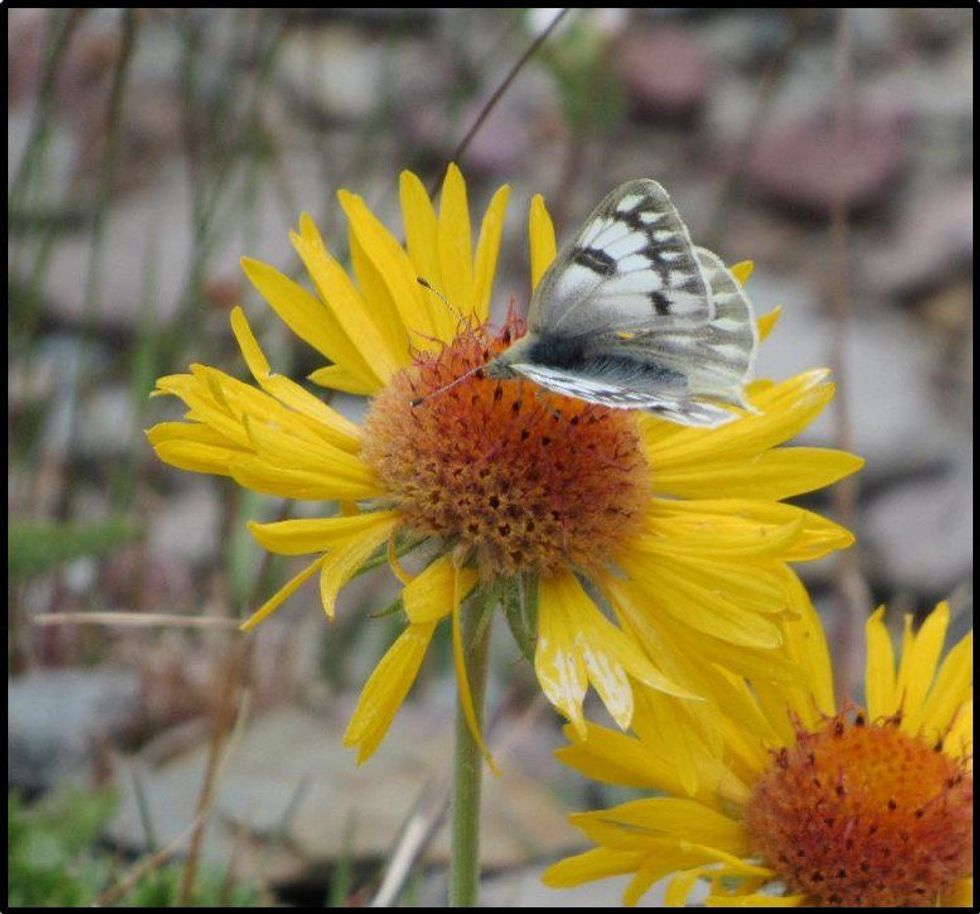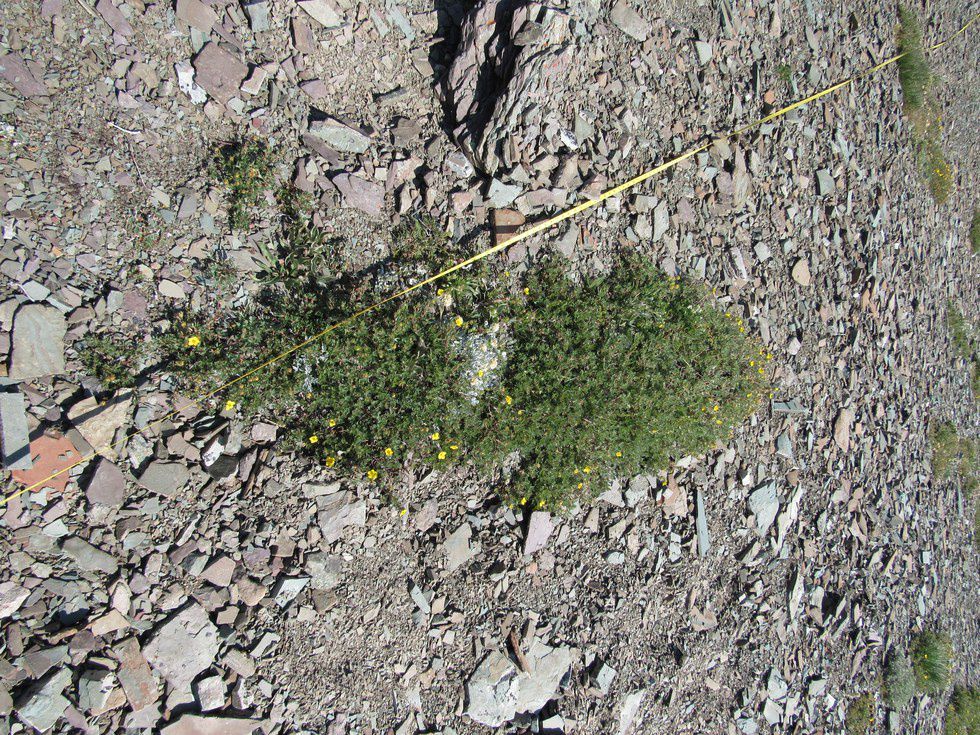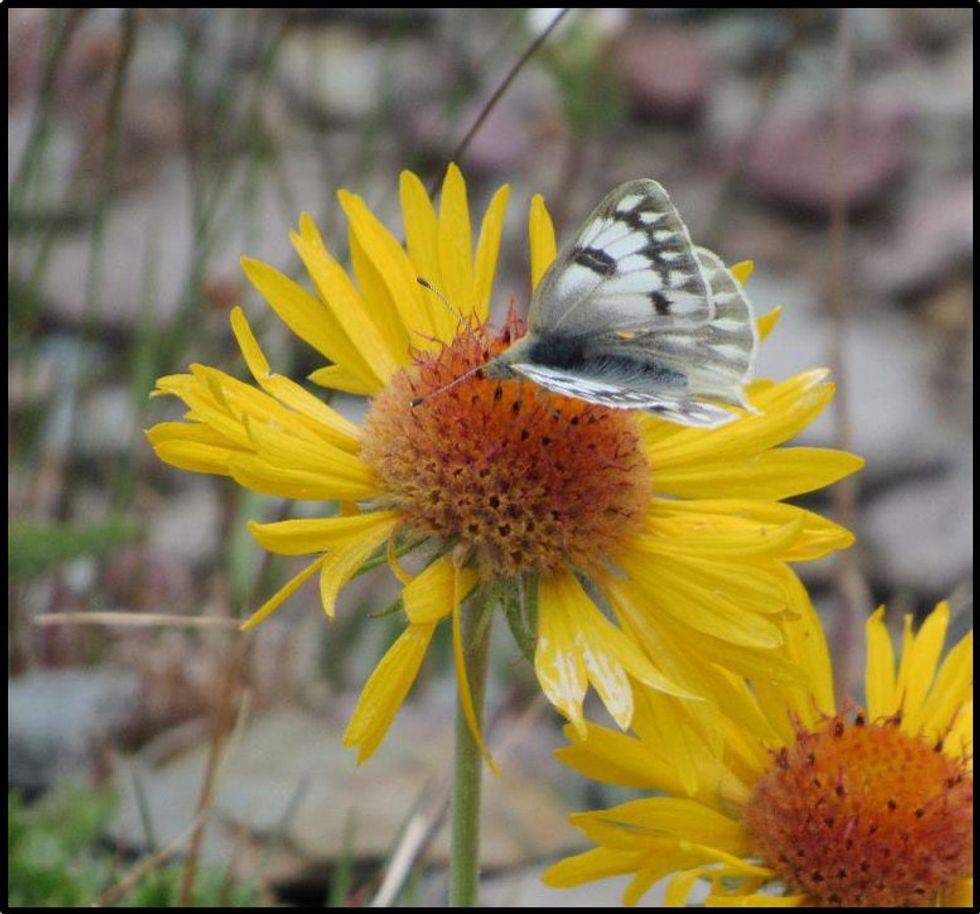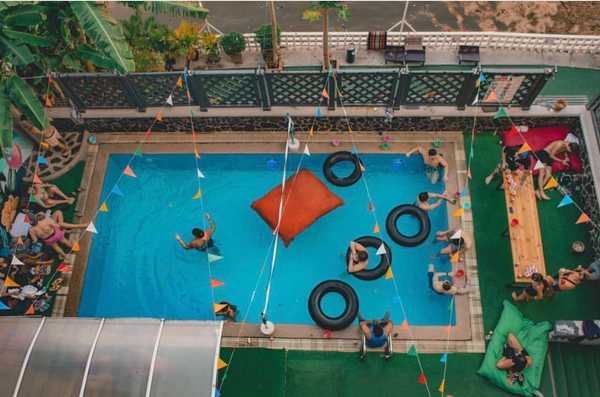Introduction
It has been long established that plants can have positive effects on their botanical neighbors Relationships between one species an another that is beneficial to at least one species and harmful to neither is known a facilitation. Facilitation can assist the beneficiary plant species in the acquisition of mineral nutrients and water, as well as provide shade or even protection from herbivory (Callaway, 2002). Others suggests the presence of one flowering plant in close proximity to another may increase the number of pollinators visiting each flower. In 1981 Douglas Schemske discovered that two flowering native tropical herbs saw higher visitation rates by pollinators when the two herbs were in close proximity (Schemske, 1981). Similarly, in a study conducted in Norway, the author suggest that simultaneous blooming of flowers in Norway’s alpine may lead to an increase in pollinator visitations to all flowers (Totland, 1993). There is no doubt that pollinators play a huge role in the reproductive cycles of many species of alpine cushion plants. For this reason many cushions display large, brightly colored flowers relative to their overall size to attract pollinators (Ridenour, Lecture, 2016). Despite the findings of Schemske and Totland, others suggest that this may not be the case for alpine biomes. In an experiment conducted by Alejandro A. Muñoz in the Chilean Andes, flowering invasive species were found, in high densities, to harm pollinator visitation rates to native alpine plant species (Muñoz 2008). With increases in temperature due to global climate change as well as globalization many native alpine plant species may be in jeopardy (Pauchard, 2008). For this reason it is important to investigate alpine plant community interactions as well as their interactions with pollinators. I Investigated plant-plant and plant-pollinator interactions in an alpine community and addressed the following question: do facilitated plants within cushion canopies have an effect on the number of pollinators visiting each bloom? Schemske and Totland’s research coupled with the stress gradient hypothesis, the idea that as abiotic stress increases plant relationships shift from competition to facilitation (Bertness and Callaway 1994) has lead me to predict that I will see significantly more pollinators visiting multiple flowering plant species in alpine cushion communities than single species within open or cushion sites.
Methods
Fieldwork was conducted on August 1nd, 2016 on a southwest facing slope near Scenic Point, an exposed limestone ridge in Glacier National Park. The site is located at 48°29ʹ10ʹʹN 113°19ʹW at an elevation of 7,300 feet a. s. l.
I compared pollinator visits to facilitated flowers and cushion blooms to open area pollinator visits along a fifty meter transect, sampling every mature Dasiphora fruticosa cushion that it intercepted until I had sampled sixteen cushions and paired open sites. Corresponding open areas of the same size were located nearby. I collected the number and type of plant species in each cushion community and open site. Image 1 shows one cushion that was sampled along the first transect.
Finally, I monitored both the open and cushion site for ten minutes, recording the number of flowers visited by each pollinator, flower color and total number of pollinators within cushions and corresponding open areas.
Results
The diversity and quantity of plants in the cushion canopies far surpassed those of the open sites. I found that of the thirty-one pollinators that visited my sites, eighteen of them had visited sushion plants exclusively, five had visited the other facilitated plants with the cushiosn exclusively and eight had visited both the cushions and the facilitated plants in the same visit. In order to find out if these results were statically significant I ran a Chi-squared test against the expected value one-third of thirty-one. My alpha level was set at 0.05. After running the Chi-squared test I discovered that the P value equaled 0.0111. This means that my results are statistically significant. This could lead to the conclusion that the pollinators were not visiting flowers randomly. The graph labeled Graph 2 shows the percent distribution of pollinators who visited cushions exclusively, facilitated plants exclusively or both pant types. I also monitored the open sites, but no pollinators visited these areas. Table 1 demonstrates these results
Table 1.
| Cushion Site | Pollinator # | Plant Species Visited | Color of species visited | Other Notes |
| 1 | 1 | P. diversifolia | Yellow | Site was windy |
| 2 | P. diversifolia | Yellow | Site was windy | |
| 3 | D. fruticosa | Yellow | Site was windy | |
| 4 | D. fruticosa | Yellow | Site was windy | |
| 5 | D. fruticosa A. milfolium | Yellow White | Site was windy | |
| 2 | 1 | D. fruticosa E. umbellatum | Yellow White/ Pink | Site was windy |
| 2 | D. fruticosa | Yellow | Site was windy | |
| 3 | D. fruticosa | Yellow | Site was windy | |
| 4 | E. umbellatum | White/Pink | Site was windy | |
| 3 | 1 | D. fruticosa | Yellow | Sampled in A.M. |
| 2 | D. fruticosa | Yellow | Sampled in A.M. | |
| 4 | No pollinator visits | |||
| 5 | 1 | A.milfolium E. umbellatum | White White/Pink | |
| 2 | D. fruticosa | Yellow | ||
| 3 | E. umbellatum | White/Pink | ||
| 6 | 1 | D. fruticosa | Yellow | |
| 2 | D. fruticosa P.diversifolia | Yellow Yellow | ||
| 7 | 1 | D. fruticosa | Yellow | |
| 2 | D. fruticosa | Yellow | ||
| 3 | D. fruticosa | Yellow | ||
| 8 | 1 | D. fruticosa A.milfolium | Yellow White | Site was windy |
| 2 | A.milfolium | White | Site was windy | |
| 9 | 1 | D. fruticosa G. boreale | Yellow White | Site was windy |
| 2 | D. fruticosa | Yellow | Site was windy | |
| 3 | D. fruticosa | Yellow | Site was windy | |
| 4 | D. fruticosa M.obtusiloba | Yellow White | Site was windy | |
| 10 | 1 | D. fruticose | Yellow | Site was windy |
| 11 | 1 | D. fruticosa | Yellow | Site was windy |
| 12 | 1 | D. fruticosa | Yellow | Site had few blooms |
| 13 | 1 | D. fruticosa | Yellow | Site was windy |
| 2 | D. fruticosa | Yellow | Site was windy | |
| 14 | 1 | D. fruticosa | Yellow | Site was windy |
| 15 | No pollinator visits | |||
| 16 | No pollinator visits | |||
The number of pollinators at each site who visited exclusively cushion plants, exclusively facilitated plants or both can be seen in graph 1. Along the x-axis we see the cushion sites, along the y-axis we see the number of pollinators.
Graph 1
The number of pollinators visiting each type of plant is not equal. In fact, we see that a majority, fifty-eight percent, of pollinators visited cushion plants exclusively. Approximately, twenty-four percent of the pollinators visited facilitated plants exclusively and approximately sixteen percent visited both types of plants in the same visit. This is shown in graph 2.
Discussion
Alpine cushion plants often create favorable microhabitats for other plant species, resulting in facilitation (Callaway, 2002). This is because cushion plants form microclimates that lessen the stress of abiotic factors such as temperature, wind, UV radiation and soil so thus it is more favorable for plants to live inside cushion complexes than outside in open areas. However, these nurse plants have long been thought to be facilitating other species with no real positive or negative effects to their own fitness. Understanding how blooming facilitated plants and alpine cushions interact with regards to pollinators could potentially change the idea of alpine cushion facilitation to alpine cushion mutualism.
However, in the experiment conducted on Scenic Point, I did not find this to be the case. If pollinators were visiting flowers randomly we would not expect to see the pollinators expressing a preference for one type of bloom over another. This means that we should expect the ratio of pollinators visiting cushion, facilitated or both types of plants to be the same. Although I expected that having multiple flowers in bloom in close proximity would cause pollinators to visit beneficiary and cushion plant types together in the same visit, I found, through comparing ratios and a Chi-squared test, that the results were significant and they upheld the null hypothesis that I will not see significantly more pollinators visiting multiple flowering plant species in cushion communities than single species in open or cushion sites. In fact my results indicate that pollinators seem to have a preference for the alpine cushion blooms over facilitated blooms, although further testing would have to be done to solidify this idea.
One possible explanation for this lies in the color of the blooms. According to an article written by Sarah Arnold, in Norway, white and yellow flowers seem to be preferred by pollinators over flowers of blue or violet in alpine biome because of different ratios of bee to fly pollinators (Arnold, 2007). Flys seem to prefer flowers that are white and yellow and, according to Arnold, there are typically more fly pollinators in the alpine than bees, who prefer blue and violet flowers. In the experiment conducted on Scenic Point, white and yellow were exclusively chosen by the pollinators. Since the main foundation species, Dasiforia fruticosa, produced yellow flowers, it could stand to reason that they would be visited more frequently than the facilitated flowers which were often shades of blue and white.
Pauchard et al (2009) found that invasive plants are harbored in cushion canopies. Others found that invasive plants that are facilitated by cushion canopies in alpine biomes can result in fewer pollinator visits to the cushion plant as long as the invasive plant appears in large enough quantities (Muñoz, 2008). The results from the Scenic Point experiment demonstrate at least a trend in the opposite direction, meaning that cushion plants are being visited by more pollinators than their beneficiary plants are.
These results are also contrary to a long-standing study by Douglas W. Schemske which looked at the pollination rates of two different tropical herbs and their increasing pollinator visits when they bloomed near each other. As the Scenic Point results do not indicate that more pollinators visited both sets of plants than single types, they do not coordinate with Schemske’s findings.
According to the stress gradient hypothesis. Positive interactions should be much more common in communities where abiotic stressors are high. (Bertness and Callaway, 1994). If this were the case at Scenic point we might have expected to see less competition between plants for pollinators in the high-stress environment of the alpine. Yet, in our sample we saw cushion blooms effectively outcompeting their beneficiary species for pollinators.
Another possible explanation for these unexpected results is the less than ideal conditions in which the pollinator observations were conducted. Windy weather and short sampling window caused me to observe cushions and open sites when pollinators were likely seeking shelter, not pollinating. Moreover the limited time in which to sample produced a small sample size which could potentially skew the results. In the future it would be very interesting to see if the alpine biome is unique in its pollinator distribution across cushion and non-cushion species in a more accurate experiment.
References
Arnold, Sarah. “Flower colours along an alpine altitude gradient, seen through the eyes of fly and bee pollinators.” Arthropod-Plant Interaction. 3.1. (2007): 27-43
Bertness D, Mark and Callaway, Ragan “Positive interactions in communities.” Tree 9.5. (1994): 191-193
Callaway, Ragan M. "Positive Interactions among Alpine Plants Increase with Stress." Nature 417 (2002): 844-47.
Muñoz, Alejandro A. “The presence of a showy invasive plant disrupts pollinator service and reproductive output in native alpine species only at high densities.” Journal of Ecology 96.3. (2008):459-467
Pauchard, Aníbal. “Ain’t no mountain high enough: plant invasions reaching new elevations.” Frontiers in Ecology (2008): 479
Ridenour, Wendy. Alpine Ecology. Class and Field Lecture, July 25 2016-August 4 2016.
Schemske, Douglas W. “Floral Convergence and Pollinator Sharing in Two Bee-Pollinated Tropical Herbs.” Ecology 62.4. (1981): 946-954
Totland, Ørjan. “Pollination in alpine Norway: flowering phenology, insect visitors, and visitation rates in two plant communities.” Canadian Journal of Botany 71.8. (1993):1079

























